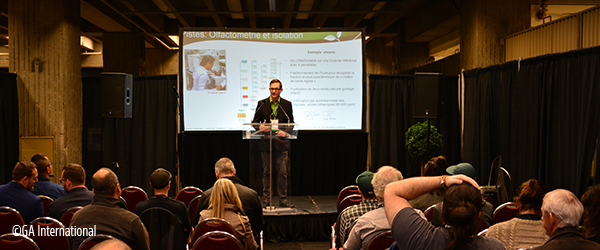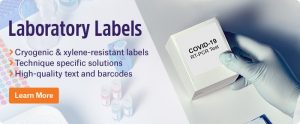 When working in a lab, you should be as clear as possible with the person you’re communicating with, whether it’s the undergraduate student you’re mentoring or the editors of the journal you wish to publish in. Unfortunately, performing experiments alone on a day-to-day basis isn’t the greatest way to improve communication in the lab, and work on those skills. Here are several ways we, as scientists, can refine them:
When working in a lab, you should be as clear as possible with the person you’re communicating with, whether it’s the undergraduate student you’re mentoring or the editors of the journal you wish to publish in. Unfortunately, performing experiments alone on a day-to-day basis isn’t the greatest way to improve communication in the lab, and work on those skills. Here are several ways we, as scientists, can refine them:
Practice presenting your work
For those working in life sciences, all that hard work will have to be summed up and communicated to a larger audience. Graduate school alone is full of committee meetings as well as local (and sometimes international) conferences. Unfortunately, working in the lab doesn’t afford all that much time to prepare for these types of events. So, how can you improve your presentation skills? First things first, practice! Lab meetings offer the perfect opportunity for this; you can present your own data and will get plenty of constructive criticism to help you improve. Write down what you want to say and rehearse it several times until you’re confident enough in what you’re saying and how you’re saying it. When rehearsing, get used to taking deep breaths and pausing, which, as a listener, will make everything you’re stating easier to understand and digest, and try to keep a bottle of water handy, as it will help you take pauses and keep you hydrated. Also remember that, out of everyone in the room, you usually know the most about the subject you’re presenting, and that most other scientists are sympathetic to your cause, as they’ve had to go through the same process many times throughout their careers.
Write, write, then write some more
Practicing your writing skills is also essential when working in life science. The primary means of communicating results lies in articles published in scientific journals, grant funding applications, and company reports. It’s important to learn how to structure these long-form papers in ways that highlight meaningful information in clear and concise ways while adhering to the journal’s or funding agency’s specific guidelines. Just like presenting at a conference, the only way to improve your writing skills is through practice. Start by writing abstracts with the information you have at hand, which will help you figure out the main points of your work and how to condense them into a digestible paragraph of information. As more results come in, writing the outline of a paper can help visualize the best way to present your data. For graduate students and post-doctoral fellows, applying for fellowships also provides an opportunity to hone your writing skills. Regardless of how you choose to practice, it’s always a good idea to have someone proofread your work for clarity, grammar, and syntax, no matter how experienced you are—even this blog has been proofread several times! Remember, your articles are more likely to be accepted by high-impact journals if the ideas you’re conveying are written as definitively and error-free as possible. In addition, read as many articles as you can; this will help you stay up-to-date on your subject, while also providing an excellent set of writing examples.
Dabble in the arts
Partaking in the arts, whether you’re writing short stories, painting, or just drawing doodles, is something that can help you develop your ability to communicate complex ideas. Expressing yourself through artistic outlets will let you see your own research through different lenses, giving you a better appreciation for how your work fits into the world as a whole and allowing you to better contextualize it for others.
Teach
Teaching doesn’t just mean lecturing a classroom of hundreds of students. Overseeing laboratory courses, usually composed of smaller numbers of students, is a great way to broaden your lab management and one-on-one communication skills. If your workplace doesn’t provide any opportunities to formally teach, the next best thing is to mentor junior staff and students in the lab. Recapitulating facts, theories, and methodologies to a lab member with less experience than yourself will help you visualize the project in ways that can be understood by anyone, even those who aren’t specialists in your field.
Outfit your lab with a LIMS
Using a laboratory information management system (LIMS) can make communication inside your lab much more efficient. The most obvious ways a LIMS can help lab members communicate is by assigning tasks, scheduling times for using equipment, and keeping everyone up-to date on the status of your lab’s inventory. By allowing colleagues to be assigned to various projects, they also make it easy to share data and workflows, as each collaborator can access information from the LIMS anytime and anywhere. With a cloud-based system that utilizes apps, all members of the lab can manage the status of their projects in real-time and coordinate their tasks with other members, even from home. Note that when using a LIMS, barcode labels printed with 2D barcodes are essential to maintain an efficient workflow, ensuring all samples can be scanned as they’re processed using your smart phone.
Go out and have some fun!
Getting to know your lab mates results in overall healthier relationships, with more intellectual and emotional support. It also increases workflow, as effective communication leads to an efficient coordination of tasks, particularly when the same reagents and instrumentation are being used. The easiest way to improve communication with your peers is to socialize with them outside the lab by having lunch together, going on outings to the movies, playing sports, or just heading to the bar for drinks and tacos after work. For those that practically live at the lab (you know who you are!), card or board games—or video games—in the atrium during breaks at night will do. Video games can be especially useful for building teamwork, as one study showed that video games were more effective for increasing productivity than traditional team-building activities.1
Communication is important no matter where you work, but it’s especially necessary in the lab, where experiments and tests can cost thousands of dollars and the results can significantly affect the lives of the patients who depend on them. In healthcare, mislabeled specimens can cause irreparable damage and stress to patients, and can cost some institutions as much as one million dollars annually. Poor communication could even result in severe lab accidents when dangerous chemicals and pathogens are used without informing those around you. Improving communication inside and outside the lab will make it easier to avoid these errors and enhances your ability to convey your findings to scientists and non-scientists alike.
LabTAG by GA International is a leading manufacturer of high-performance specialty labels and a supplier of identification solutions used in research and medical labs as well as healthcare institutions.



